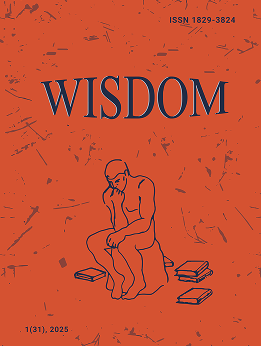Science and Religion
DOI:
https://doi.org/10.24234/wisdom.v6i1.61Keywords:
sciensce, relligions, logical and mathematical tools, society, comparisonAbstract
The main aim of this paper is to undertake a comparative scientific analysis of religions on the basis of the well-known theoretical foundation developed by Jean Piaget. The special feature of his approach is its logical and mathematical underpinnings. We use them to resolve disputes among religious systems. In this case we are obliged to refer to that level of reality which can be disclosed to us only by means of corresponding logical and mathematical tools. Such an apparatus and its accompanying map of reality is a necessary component in the study of what is at essence an evolutionary biological and social process, which is what we are namely dealing with in terms of the analytic study of religions.
This fundamental proposition regarding the connection between logical-mathematical coordination and the morphogenesis of life ought to provide the basis for ongoing progress in unifying the religious worldviews within the framework of the most highly developed and universal among them. My overall thesis is founded on the overwhelmingly universal character of Christianity, encompassing within its embrace all the other religious methodological approaches in the form of partial and particular instances, though not their entire religious teachings.
Downloads
Downloads
Published
How to Cite
Issue
Section
License
Creative Commons Attribution-Non-Commercial (CC BY-NC). CC BY-NC allows users to copy and distribute the article, provided this is not done for commercial purposes. The users may adapt – remix, transform, and build upon the material giving appropriate credit, and providing a link to the license. The full details of the license are available at https://creativecommons.org/licenses/by-nc/4.0/.















